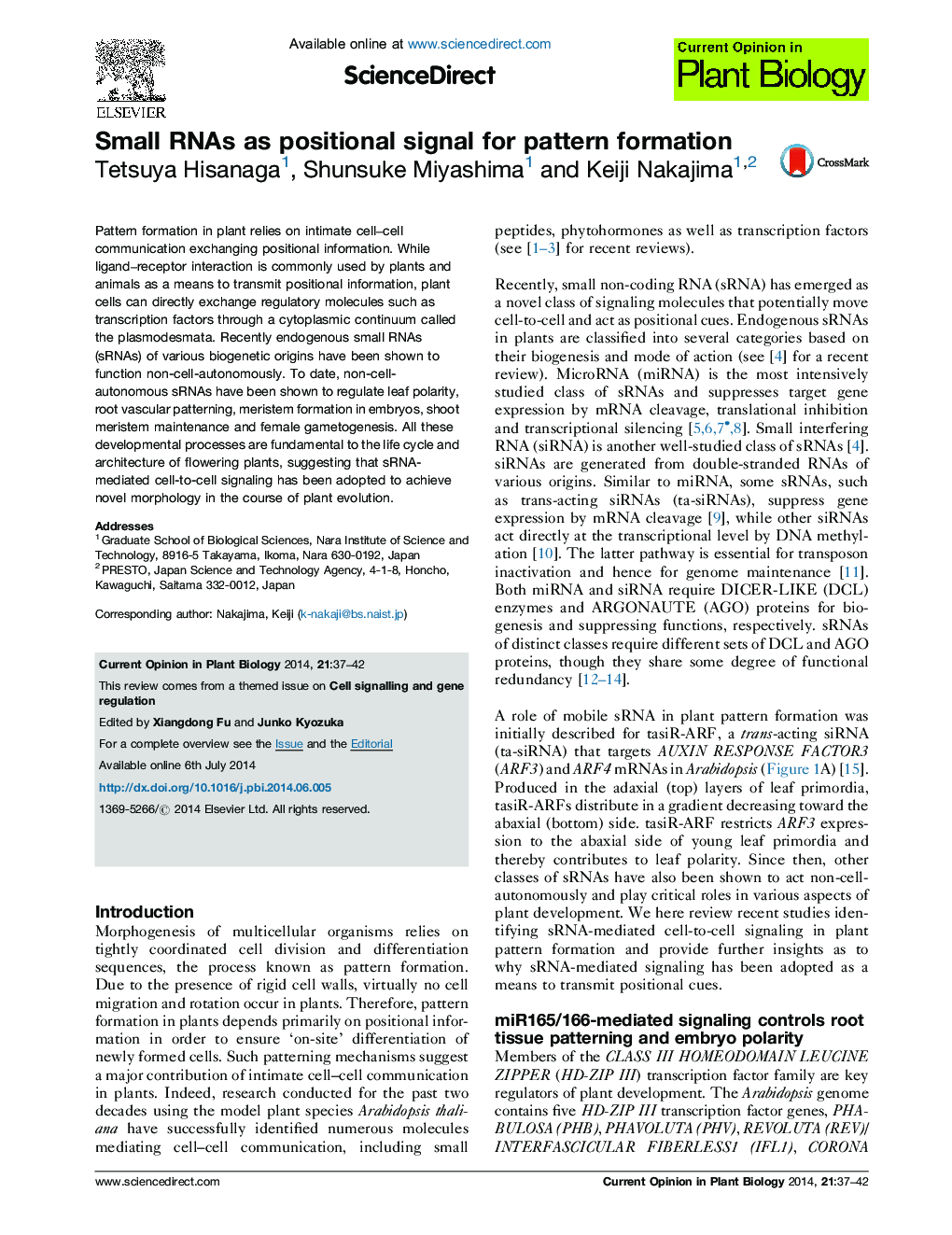| کد مقاله | کد نشریه | سال انتشار | مقاله انگلیسی | نسخه تمام متن |
|---|---|---|---|---|
| 2046672 | 1543214 | 2014 | 6 صفحه PDF | دانلود رایگان |

• Plant sRNAs of various biogenetic origins are non-cell-autonomous.
• sRNA-mediated patterning is fundamental to plant life cycle and architecture.
• Some sRNAs act as a dose-dependent signal and define sharp expression boundaries.
• Mechanism of sRNA movement is a major issue to be solved in future.
Pattern formation in plant relies on intimate cell–cell communication exchanging positional information. While ligand–receptor interaction is commonly used by plants and animals as a means to transmit positional information, plant cells can directly exchange regulatory molecules such as transcription factors through a cytoplasmic continuum called the plasmodesmata. Recently endogenous small RNAs (sRNAs) of various biogenetic origins have been shown to function non-cell-autonomously. To date, non-cell-autonomous sRNAs have been shown to regulate leaf polarity, root vascular patterning, meristem formation in embryos, shoot meristem maintenance and female gametogenesis. All these developmental processes are fundamental to the life cycle and architecture of flowering plants, suggesting that sRNA-mediated cell-to-cell signaling has been adopted to achieve novel morphology in the course of plant evolution.
Journal: Current Opinion in Plant Biology - Volume 21, October 2014, Pages 37–42